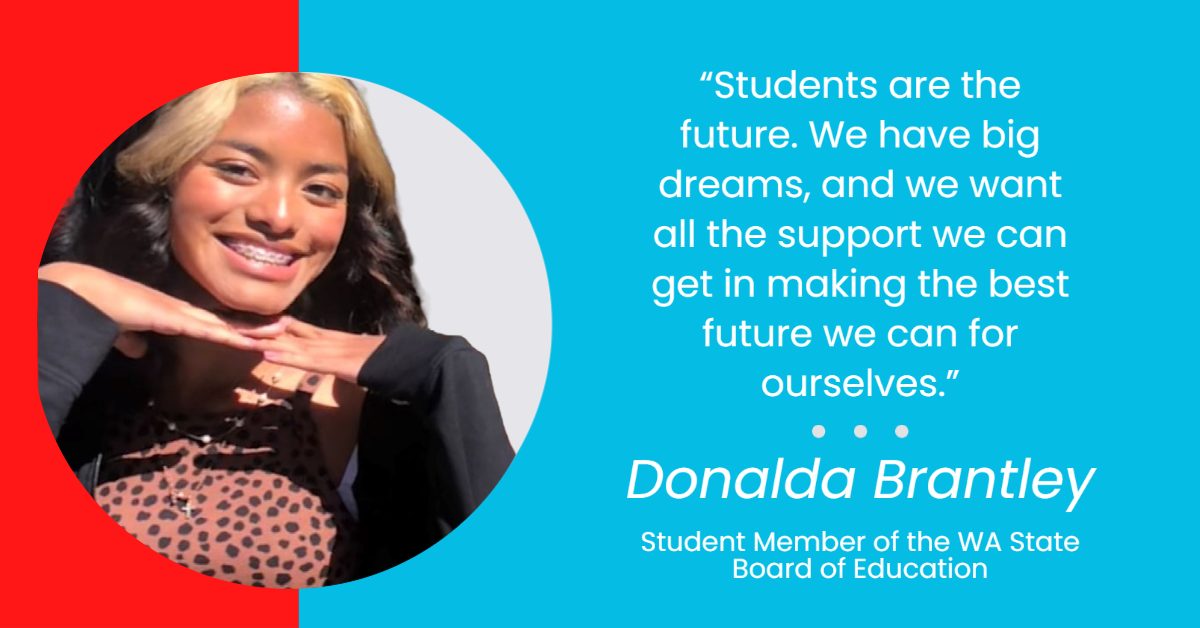
Students of Washington, I’m sure you’ve been asked the question, “Where do you see yourself in 5 years?” “10 years?” Or even “15 years?” If students are anything like me, they may have no clue just yet. Luckily there are tools and people in our communities looking out for us. I also think schools can do better in making one tool in particular more meaningful.
Let me introduce myself: my name is Donalda Brantley, and I am a student at John R. Rogers High School in Spokane. I was given the amazing opportunity to serve on our state’s Board of Education starting last year. I joined the Board to advocate for students who look like me and other students struggling to get their voice heard.
For this blog post, I want to share what I learned previously from talking with my lovely peers about the HSBP, as well as new insights I gathered after interviewing more of my classmates. I sincerely hope that sharing my voice can influence educators and policymakers to help us students feel more confident and comfortable with launching us into our future colleges/careers/trainings/military/experiences.
In general, I heard either the Plan cannot sufficiently support students’ future plans or is stressing them out for their current planning. For example, students who plan to pursue an apprenticeship or other technical training told me they do not see themselves included in the current process. During the process of the High School and Beyond Plan, they find it stressful or not useful because the Plan does not include resources for their specific future goals. A quick solution to this is having more open conversations with these students to assure them that their plans to go into an apprenticeship or other technical training, for example, are important.
Another issue is that students don’t know about the Plan or know very little about it. More needs to be done to inform students about the Plan, which will take a lot of work throughout the entire education system – from classroom teachers and counselors to principals and superintendents making it a priority. Communication is key.
The High School and Beyond Plan has a lot of potential. I don’t want to ignore that the Plan has helped many students. There are so many different students out there with different goals, and the High School and Beyond Plan should be flexible enough to support them all. Based on what I’ve heard from my peers at Rogers High School, my recommendations for schools and districts are:
- Expand the HSBP by opening more doors to opportunities for students to find their interests for their future. The Plan process should point students toward a variety of options such as job shadowing/internships/etc., as well as engaging students to think about their interests and how they might tie to specific education/training and careers. This includes students who plan to pursue all different kinds of credentials and careers. Assure students that their post-high school education or training path is valid.
- Make conversations about planning for the future less terrifying by allowing students to explore their interests inside and outside of school (for example, providing hands on opportunities for students to explore their personal interests). This also looks like starting the conversation with us about our futures (here is a resource about questions to ask).
- Make the HSBP more known to each and every student and make the experience relevant to their interests to excite students about their future. Communicate about it early and often in middle and high school.
Students are the future. We have big dreams, and we want all the support we can get in making the best future we can for ourselves and our communities.